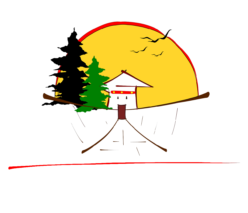 |
The annual Punakha Tsechu begins today following a three day domche. The Punakha Domchoe ended yesterday with Norb Chu Sha Ne or the symbolic immersion of the sacred relic into the Mochu River.
Decked in colorful ghos and kiras, the people of Punakha and other nearby dzongkhags flocked to the Punakha Dzong to witness the final day of the Domchoe. The highlight of the final day of the three day Domchoe was the symbolic immersion of sacred relic into the river.
The ceremony brings to life a historical event which took place about 400 years ago. An invading Tibetan force had come to forcibly take back the sacred Ranjung Khasar Pani. The Zhabdrung hid the sacred relic in the sleeve of his robe and threw a fake one in the river. The Tibetan force believing that the relic has been lost for ever went back home. Continue reading Punakha Domchoe concludes



